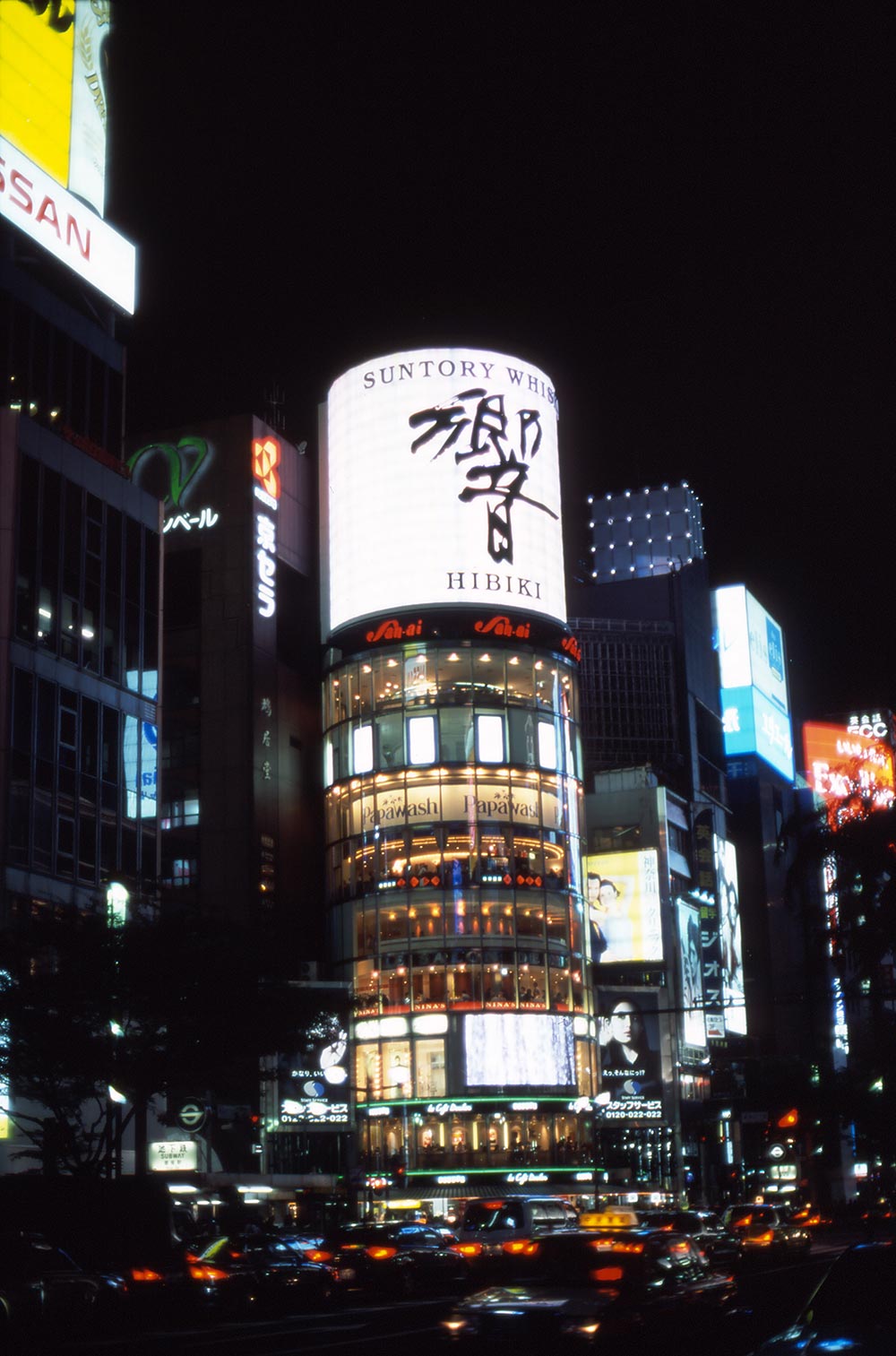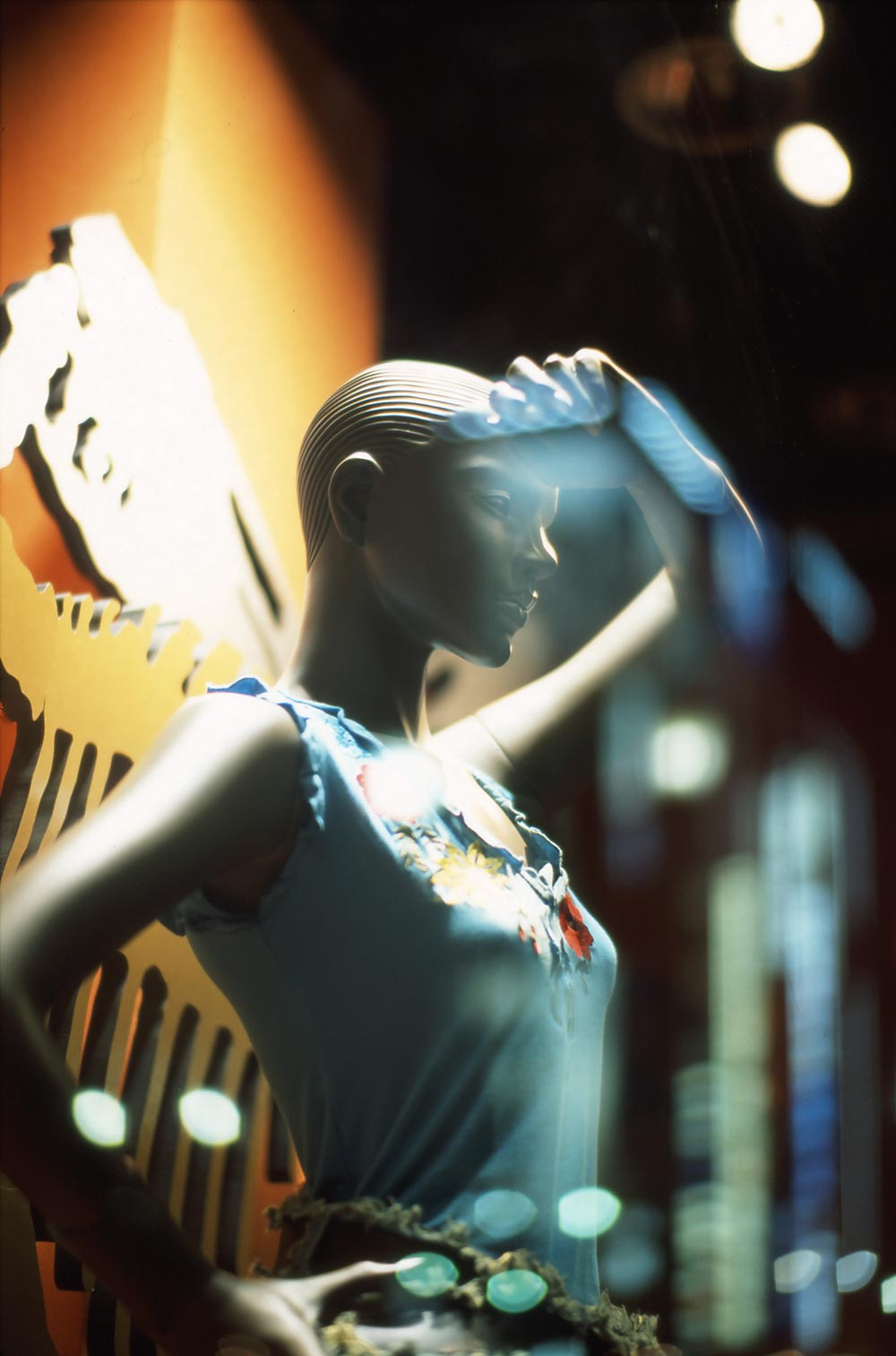NIKKOR - The Thousand and One Nights No.16

AI Noct Nikkor 58mm F1.2
This time I'm going to discuss a standard lens using an aspherical surface, the Ai Noct NIKKOR 58mm f/1.2 following the 6th Tale discussed "the world's first aspherical SLR lens," OP Fisheye-Nikkor 10mm f/5.6.
by Kouichi Ohshita
I. Sagittal Coma Flare
The Noct NIKKOR that was said to be named after "Nocturne" was released in 1977, the same year the release of the Nikon Photomic A. This lens, as was called "Noct", was designed for taking a picture at night with fully opened aperture stop. What is the difference from the conventional Nikkor AUTO 55mm f/1.2S ? I would like to explain this first.
In a photographic lens design, the faster the lens becomes, the more difficult to correct aberrations becomes. In particular, lens designers were annoyed by sagittal coma flare seriously produced when a lens became wider the angle of view and faster. You may not be familiar with the word, sagittal coma flare. It is an aberration that a point image locating on the periphery of an image frame makes an image like a bird spreading its wings as shown in Sample 2. The intensity of this aberration is rather weak, so that only slight decrease in contrast is sensed when shooting in front lighting and it is not so conspicuous.
Moreover, it does not cause any problem in ordinary photograph because the aberration disappears when the aperture is stopped down by two to three steps. However, it becomes conspicuous only when the object is a point source and has a high contrast such as taking a night view or an astrophotograph.
Since a night view and an astrophotograph are dark objects, you should shoot them with a large-diameter lens, as large as possible. However, in order to make the best use of a large-diameter lens, when you shoot these objects with the maximum aperture, a point image must wear a veil like a bird spreading its wings. Although this is dissolved by stopping down the aperture with a few steps, there is not much point in using a large-diameter lens. It was the Noct NIKKOR that was developed for correcting the troublesome sagittal coma flare produced at the maximum aperture. The person who tackled this problem was Mr. SHIMIZU, Yoshiaki, who has often appeared in this serial.
II. Lens Structure


The structure of the lens is a 6-group, 7-element modified Gaussian type lens as shown in Fig. 1A. The Gaussian type lens has a characteristic capable of correcting chromatic aberration and spherical aberration well as mentioned several times in this serial, and is the most suitable lens type for a large-diameter lens. However, as described above, sagittal coma flare is difficult to be corrected by the simple Gaussian type lens, so that when the f-number becomes smaller, sagittal coma flare produces severely. Mr. Shimizu drastically reduced sagittal coma flare such that curvature of each lens is weakened by using high refractive index glasses and the most object side lens having the largest diameter is made to be an aspherical lens.
Please take a look at the cross sectional view of the Ai Noct NIKKOR shown in Fig. 1A comparing with that of the current Ai Nikkor 50mm f/1.2S shown in Fig. 1B. Although they are the same Gaussian type lenses, if you compare them very carefully, you may notice that the radius of curvature of each lens is considerably different. In addition, by applying an aspherical surface to the first lens element, sagittal coma flare is corrected.
By the way, an aspherical surface can be classified into two types by its usage. The first type is an aspherical surface for controlling distortion as described before with the OP Fisheye lens. The other type is an aspherical surface for controlling spherical aberration and coma like this Noct NIKKOR. To tell the truth, the required accuracy of the aspherical surface for controlling spherical aberration and coma is by far severer than that for controlling distortion. Accordingly, in the Noct NIKKOR, the aspherical surface was manufactured by an aspherical polishing method. The aspherical polishing method had been used for manufacturing an aspherical mirror of a catoptric astronomical telescope and had been able to manufacture an aspherical surface with very high precision. However, proficient technique of a skilled polishing technician had been indispensable for the manufacturing method, so that it had been serious in view of productivity and cost.
Moreover, it is essential for a high precision lens to be inspected with high precision. In the case of the Noct NIKKOR, it is needless to say that an aspherical lens element was measured its surface shape. In order to control amount of flare of each product, the assembled lens was measured aberration by a special inspection instrument in addition to a routine inspection of resolving power test. Although you cannot tell the difference from the Ai Nikkor 50mm f/1.2S at a first glance, you may have understood why the price was triple. From manufacturing to inspection, they spent so much time and effort on this lens.
III. Lens configuration

Nikon F-301, Ai Noct NIKKOR 58mm f/1.2 lens, f/1.2, Auto (shutter speed), UV TREBI100
©2002/2003 Kouichi Ohshita

Nikon F-301, Ai Nikkor 50mm f/1.2S lens, f/1.2, Auto (shutter speed), UV TREBI100
©2002/2003 Kouichi Ohshita

Nikon F-301, Ai Noct NIKKOR 58mm f/1.2 lens, f/1.2, Auto (shutter speed), UV TREBI100
©2002/2003 Kouichi Ohshita
Let's take a look at how this lens performs with reference to the example photographs.
The example photographs at this time is a night view in which characteristic of the Noct NIKKOR can be displayed. Speaking of a night view photograph, it is standard technique that you use a low speed film with a camera fixed on a tripod, stop down the aperture of the lens, and shoot at slow shutter speed without haste. However, since the Noct NIKKOR is as fast as f/1.2, it arrows a hand-held shooting of relatively bright night view even if you use modest speed film like ISO 100. The pace of shooting a night view in the feeling of snapshot was fresh and comfortable. On shooting the example photographs, I didn't bring a tripod, and shot all frames with holding a camera by hand. I was somewhat excited and shot too easily, so that the vertical line tilted a little.
They say that the Noct NIKKOR used to be tested its sagittal coma flare by shooting night view of GINZA (downtown TOKYO) for evaluation. In connection with this, Sample 1 and 2 are the night views of GINZA shot for comparing with the Ai Nikkor 50mm f/1.2S. Although both photographs are shot at full aperture, you may notice that sagittal coma flare shown in the photograph, 1B, shot by the Ai Nikkor 50mm f/1.2S is scarcely seen in the photograph, 1A, shot by the Noct NIKKOR. At full aperture, since the image quality deterioration due to flare is minimal, sharp images are obtained. On the other hand, in the photograph shot by the Ai Nikkor 50mm f/1.2S, there is a slight flare in the center, and the flare shaping like a bird spreading its wings is surrounding streetlights locating on the periphery of the image frame. Imaging characteristic of the Noct NIKKOR is that an object is embossed by high contrast and edge sharpness, but that of the Ai Nikkor 50mm f/1.2S is that an image of an object is formed by minute details.
Accordingly, the Ai Nikkor 50mm f/1.2S is suitable for shooting a portrait.
Sample 3, I shot a show window through the glass. Although there are pros and cons of defocusing characteristic of the lens, I think rear defocus is gentle and beautiful. With the in-focus plane showing sheer sharpness, background in the show window and streetlights are melted smoothly. However, front defocus has a little peculiarity to happen to become edgy according to the distance from the object.
On shooting night view, although strong light sources tend to come into the lens, ghost images may not be conspicuous because of multicoating applied on the lens surface. However, a lens hood should be attached regularly to avoid flare caused by strong light sources coming from outside of image frame.
The Noct NIKKOR released in 1977 was modified to "Ai-S" in 1982, and terminated in 1997, one year after the release of Nikon F5. I suppose this lens would have been the only Nikkor lens that added values to the imaging characteristic. It is said that a lot of people are still regretting the termination of the lens.
Even if the name has been vanished, the idea of the Noct NIKKOR to eliminate sagittal coma flare is inherited by other NIKKOR lenses and stays alive. I would like to tell this continuation in some time or other.

NIKKOR - The Thousand and One Nights
The history of Nikon cameras is also that of NIKKOR lenses. This serial story features fascinating tales of lens design and manufacture.

